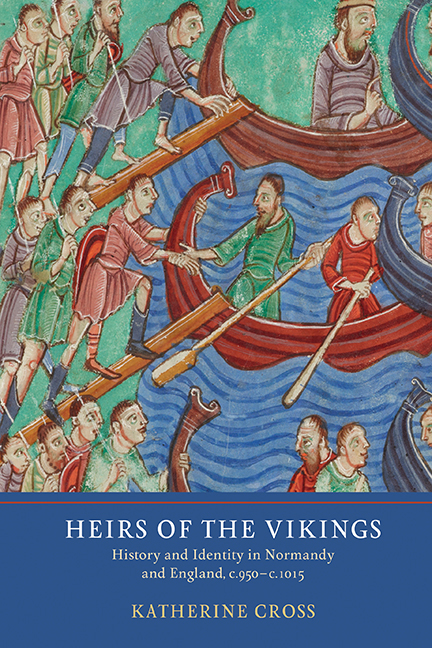Book contents
- Frontmatter
- Dedication
- Contents
- List of illustrations
- Acknowledgements
- Abbreviations
- Note on terminology
- Map
- Introduction: The Problem of Viking Identity
- 1 Genealogy: Building a Viking Age Dynasty
- 2 Origin Myths: A People for a Dynasty
- 3 Hagiography I: Ruin and Restoration
- 4 Hagiography II: Saintly Patronage
- 5 Charter Narratives: Normans, Northumbrians and Northmen
- Conclusion: Viking Age Narratives and Ethnic Identities
- Appendix 1 The Date of Fulbert's Vita Romani
- Appendix 2 The Dates of the Latin Vita Prima Sancti Neoti and the Old English Life of St Neot
- Bibliography
- Index
5 - Charter Narratives: Normans, Northumbrians and Northmen
Published online by Cambridge University Press: 19 July 2019
- Frontmatter
- Dedication
- Contents
- List of illustrations
- Acknowledgements
- Abbreviations
- Note on terminology
- Map
- Introduction: The Problem of Viking Identity
- 1 Genealogy: Building a Viking Age Dynasty
- 2 Origin Myths: A People for a Dynasty
- 3 Hagiography I: Ruin and Restoration
- 4 Hagiography II: Saintly Patronage
- 5 Charter Narratives: Normans, Northumbrians and Northmen
- Conclusion: Viking Age Narratives and Ethnic Identities
- Appendix 1 The Date of Fulbert's Vita Romani
- Appendix 2 The Dates of the Latin Vita Prima Sancti Neoti and the Old English Life of St Neot
- Bibliography
- Index
Summary
The regional significance of the saints’ cults highlighted in the previous chapter points towards a crucial perspective on viking heritage both sides of the Channel: territorial and geographical distinctions. Different regions responded in varied ways to Scandinavian, English and Norman rulers, and were affected differently by the viking past. In modern historiography, the duchy of Normandy – and with it, the Norman people – is frequently presented as the direct outcome of the actions of Rollo's viking army and the territorial agreement made in 911. Likewise, modern historical accounts of Scandinavian influence in England employ numerous maps revealing the distribution of Old Norse place-names, ‘viking’ artefacts and Anglo- Scandinavian sculpture across the so-called ‘Danelaw’. Yet tenth-century developments, by which the political boundaries of the Norman duchy and the English kingdom were reshaped, proceeded gradually, as Norman rulers received land from the French king and English kings expanded their territory into areas dominated by Norse leaders. Contemporaries did not always attribute the same significance to these developments as modern historians have done. Moreover, existing regional loyalties continued to attract allegiance.
This final chapter compares the historical consciousness represented in Norman ducal charters and English royal diplomas, with particular emphasis on how it related to ethnic identity in different regions. Geographical identity is frequently identified as a focus of ethnicity: Handelman views ‘permanent territorial boundaries’ as the force which makes ethnicity into a community, and Hutchinson and Smith include ‘a link with a homeland’ as one of their six main features of ethnic groups. We encountered medieval manifestations of these views in the emphasis on migration myths in Chapter 2, while the idea of the ‘homeland’, or patria, appeared as a strong motivation, full of emotional ties, in many of the historical and hagiographical texts explored in earlier chapters. On a local scale, regional identities were particularly strong in the early medieval world, in societies in which long-distance communication was slow and mass communication infrequent. The various levels of geographical identities illustrate particularly clearly how individuals perceived themselves to be members of several ethnic groups, which were employed in different situations. Among the overlapping geographical identities present in England and Normandy, this chapter explores the perceived effects of viking raids and conquests on geographical boundaries between peoples.
- Type
- Chapter
- Information
- Heirs of the VikingsHistory and Identity in Normandy and England, c.950–c.1015, pp. 155 - 200Publisher: Boydell & BrewerPrint publication year: 2018



